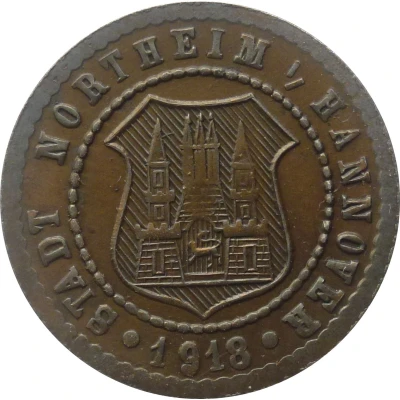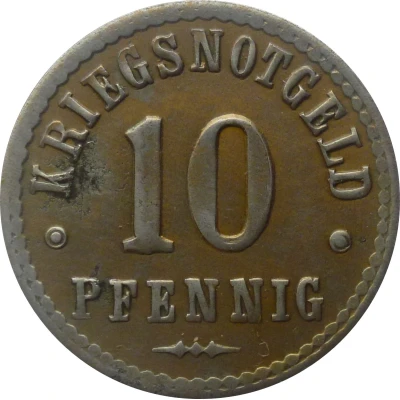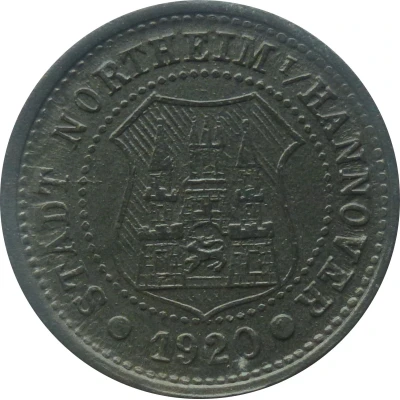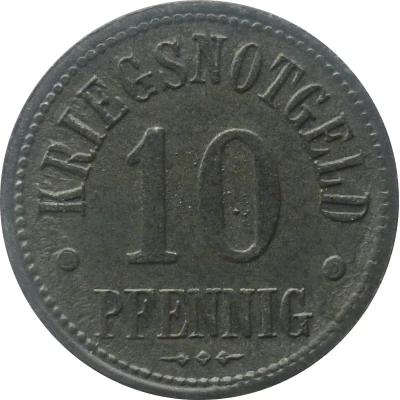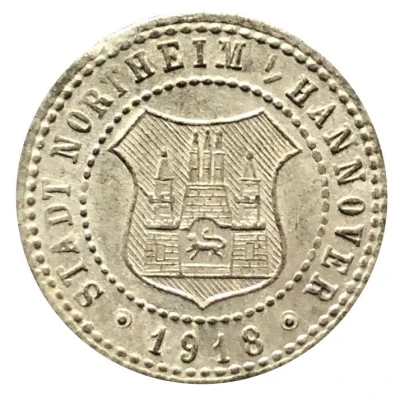
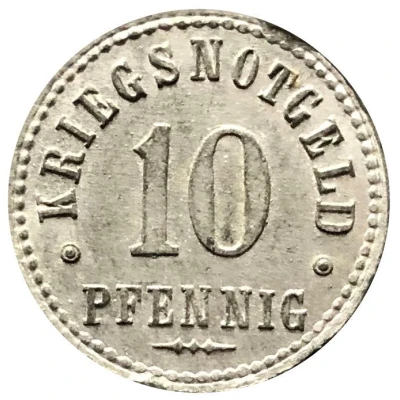

© Rhonan (CC BY-NC-SA)
10 Pfennigs - Northeim
| Zinc | 1.8 g | 20.1 mm |
| Issuer | City of Northeim (notgeld) (Prussian province of Hanover) |
|---|---|
| Period | Weimar Republic (1918-1933) |
| Type | Standard circulation coin |
| Years | 1918-1920 |
| Value | 10 Pfennigs (10 Pfennige) (0.10) |
| Currency | Mark (1914-1924) |
| Composition | Zinc |
| Weight | 1.8 g |
| Diameter | 20.1 mm |
| Thickness | 1.0 mm |
| Shape | Round |
| Technique | Milled |
| Orientation | Medal alignment ↑↑ |
| Demonetized | Yes |
| Updated | 2024-10-04 |
| Numista | N#72075 |
|---|---|
| Rarity index | 74% |
Reverse
Pearl rim, legend surrounding denomination.
Script: Latin
Lettering:
◉ KRIEGSNOTGELD ◉
10
PFENNIG
Edge
Plain
Comment
Issuing agency: [Stadt, Hannover].Interesting fact
One interesting fact about the 10 Pfennigs - Northeim 1918-1920 coin is that it was made of zinc, which was a unusual material for coins at that time. Most coins were made of metals like silver, gold, or copper, but the use of zinc in this coin reflects the economic and political circumstances of the time. The decision to use zinc was likely due to the scarcity and high cost of other metals during World War I and the subsequent economic crisis. This coin is a unique example of how the materials used in coin production can be influenced by historical events.
